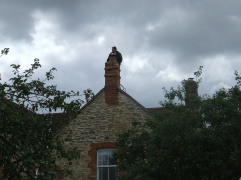Carbon monoxide
Carbon monoxide and fireplaces are a dangerous combination. Carbon monoxide is given off by burning any fuel. Therefore, any fuel-burning appliance in the home is a possible CO source. When appliances are kept in good working order they produce little CO. Appliances that aren't operating properly can produce deadly CO concentrations in your home.
Tenanted properties are required, by law, to have a Carbon Monoxide alarm fitted.
Fireplace safety tips include the following:
The fireplace damper must be opened before lighting the fire. It should be kept open until the ashes have cooled. The damper must not be closed if the ashes are still warm. The build-up of poisonous
gases inside the home can be avoided if the damper is left open.
Gasoline, charcoal lighters or other fuels should not be used to light or relight a fire since the vapors can explode. Flammable materials must never be kept near a fire. Flammable liquids must never
be stored in the home. Charcoal must never be used in a fireplace because of the risk of carbon monoxide poisoning.
A chimney that is blocked or clogged due to leaves or soot can cause combustion byproducts, including CO, to be expelled into the home. Cracked masonry could also cause an obstruction. Regular
inspection and cleaning using a chimney sweep can help help prevent or remove blockages. The chimney could also be fitted with a bird-guard to prevent nest-building.
Common sources of carbon monoxide include wood-burning and gas powered fireplaces. To make sure there is fresh air, the window should be left open a few inches. Only seasoned firewood should be
burned - do not use treated, painted, or scrap wood.
The chimney dampers must also be opened before using fireplaces. Opening it can produce a draft that goes up the chimney. This will provide the fire air to burn efficiently at the same time providing
ventilation of smoke and carbon
monoxide.
Gas logs or burners emit a lot of CO since the less-efficient, yellow flames are desired for a cosy atmosphere. Those who own ventless fireplaces must be extra careful since these appliances expel
all combustion byproducts into the room. While the fireplace is run, the combustion process is fueled by the oxygen taken from the room. When there is less oxygen, the combustion becomes less
efficient, giving off more CO.



